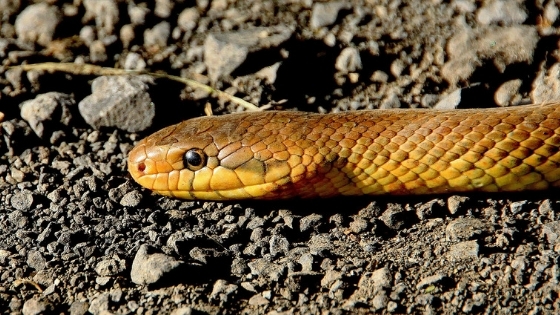“Parenting is hard” is perhaps the biggest understatement about the whole parenting affair. Every day, you struggle to keep your child within the bounds of safety.
The smallest rashes can induce a whole level of parental anxiety, invoking you to run a mental list of what they ate in the last two weeks or whom they have interacted with in the park. Colds prompt unnecessary pedia visits. And these are all justified. After all, you’re responsible for keeping this tiny human being alive!
Unfortunately, emergencies do happen, and when they do, you better know how to handle them. Learning some handy emergency SOPs becomes an imperative skill if you want to be confident in your capacity to keep your child safe wherever, whenever.
Here are the most important emergency-care tips every parent should know.

How to Recognize a Medical Emergency
Some people hesitate to call emergency responders because they’re not sure whether the situation is “serious enough” to warrant calling 911. However, emergencies are determined by the patients, not the responders, and when in doubt, it’s always better to call than to not do anything at all.
Still, it would be helpful to learn the signs of an emergency that warrants emergency help. These include the following:
- Symptoms that indicate brain failure, such as weakness, confusion, dizziness, seizures, severe headache, loss of vision, or having trouble speaking
- Difficulty with breathing
- Chest pain that does not seem to go away
- Severe bleeding that is hard to control
How to Perform CPR, or Cardiopulmonary Resuscitation
Learning how to give a CPR is perhaps one of the most helpful and practical life skills you will learn as an adult, not just as a parent. Some of the most common situations that may warrant a CPR procedure include these:
- Accidents
- Near drowning
- Suffocation
- Poisoning
- Smoke inhalation
- Electrocution injuries
- Possible sudden infant death syndrome (SIDS)
According to the Child Development Institute, CPR should be performed as soon as possible if needed. These signs include the following:
- Sudden collapse
- Being unconscious
- Breathing problems
- No pulse
- The patient has been electrocuted
- If the patient has nearly drowned
- If the patient has been exposed to drugs, smoke, or inhalants
Airway, breathing, and circulation are the three basic parts of a CPR procedure. If you’re going to conduct a CPR on a child, do it in five cycles over two minutes. YouTube has plenty of videos that show you the procedure step-by-step.
How to Pick Locks
Never in your life have you probably contemplated learning how to pick locks—until you had a toddler with the curiosity and dexterity of a cat on steroids.
It’s not uncommon for parents to get locked out of the house or their cars due to a curious toddler. The situation isn’t funny and often induces panic, especially knowing that the toddler is left to roam free around the house without any supervision.
As a parent faced with such a situation, being the bearer of the knowledge of lock picking suddenly feels like the skill to win you most competent parent of the year.
Picking locks isn’t always easy, and it requires a certain level of patience, but nothing is hard with constant practice. If for some reason you just can’t get your head—or hand—on it, tool it out and use various lock picking tools you can purchase online or any automatic lock picking device to include in your emergency toolkit, and you’ll be good to go. In instances where you don’t have those, you can use some items that might be in your purse or can be easily bought at a nearby store such as these items to set your child free.
How to Stop a Bloody Nose
Anterior nose bleeding, which is common in children, is commonly caused by a dry climate or heated indoor air, which irritates and dries out the nose. When they dry, they form crusts which may itch and easily get scratched or picked by your child. The membranes are sensitive, however, and will therefore easily bleed when severely or repeatedly picked.
Another possible cause for nosebleed is the common cold, which easily irritates the linings of the nose. Repeated blowing can also aggravate the sensitive area and cause bleeding.
If this happens to your child, have them lean a bit forward, not backward, to let the blood out. If you let your child lean back, the blood can clog their windpipe and block their airway or go to the stomach and irritate the stomach lining.
Then, pinch the nose correctly. That is, just below the bony ridge, pinching the bone as well as the soft tissue. You know you’re doing it right because your child can still breathe despite the pinching going on.
Hold the nose for at least five minutes or more, if necessary. Then place a cold pack over the nose ridge to constrict the blood vessels and help stop the bleeding. After the bleeding has stopped, do not let your child blow their nose.

How to Dress a Wound
If, during some rough-and-tumble play, your child suffered some minor scratches or cuts, it’s important that you know what to do to keep the wound cleaned and dressed. Take note, however, that, if your child suffered larger lacerations with a bit too much bleeding, you should go to the clinic and seek professional help.
To dress a wound properly, you need to make sure that the wound is rid of dirt and other contaminants. There are also preliminary steps that you need to remember before you formally go through the whole process.
How to Treat a Burn
Children are naturally curious, and they will lay their hands on anything that sparks their interest regardless if that object of fascination is a burning-hot oven. Burn incidents are common among children, so this emergency skill is perhaps the most well-known among parents.
For all kinds of burns, stop the burning immediately, and remove constrictive clothing. Depending on whether your child has a first-degree burn (affecting only the top layer of the skin) or a second-degree burn (affecting the epidermis and dermis layers of the skin), different steps will have to be followed.
How to Save a Choking Baby
Babies need constant attention for one simple fact: they will swallow whatever it is they get their hands on, and when you don’t know what to do when faced with the situation, it can be fatal.
Fortunately, it’s also a very easy thing to handle for the person who knows exactly what to do to save a choking baby. The steps are easy:
- Simply lay your baby facedown on your thigh.
- Give him or her five (5) blows on the back.
Usually, this will do the job, and the offending object will pop right out of their mouth. But if this does not work, give your baby five (5) thrusts in the chest to clear his or her airway. If, for some reason, this still doesn’t work, call the ambulance at once.
This is called the five-and-five approach. However, the American Heart Association recommends the abdominal thrust procedure, also known as the Heimlich maneuver. This is often used on bigger kids or adults.
This is how you perform the Heimlich maneuver:
- Stand behind the person.
- Form a fist with one of your hands, and position it a little over above the navel of the person.
- Grasp your fist with the other hand, and press hard into the abdomen, along with a rapid thrust upward. It will feel like lifting the person.
- Repeat this process six to ten times until the offending object is dislodged from the person’s airways.
How to Treat a Snakebite
Treating snakebites is tricky because one has to identify whether the wound is caused by a venomous snake, and that is not always common knowledge. Nevertheless, if you know that the wound is caused by a nonvenomous snake, you should treat the wound as a puncture wound.
Just looking at a snake’s simple features does not always yield the correct answer. So if you want to know a little bit more about how to identify a venomous or poisonous snake, this post is a great help.
In this case, call first responders immediately (or even when you’re in doubt over the snake’s venomous potential). Then, proceed to the outlined steps in the WebMD portal.
How to Remove a Splinter
Splinter injuries are among the topmost major medical emergencies especially among children under three. It occurs when small pieces or fragments of wood or other materials puncture the skin and gets embedded there. It’s a painful situation that makes even adults squirm.
Luckily, there are various ways to remove a splinter, including tweezers and duct tape. Search the web for resources about different ways to remove splinters.
Final Thoughts
The first few minutes after an accident are crucial in any emergency situation. They can determine the overall conclusion of events and the safety of the person involved.
As a parent, you knowing these processes will help you provide adequate action whenever the situation calls for it and let you rest with peace of mind knowing that, when your child needs help, you have the power to keep them safe and cared for.
 Kaboutjie SA Mommy Blogs by Lynne Huysamen
Kaboutjie SA Mommy Blogs by Lynne Huysamen








These are really good to know… We never know when we will need it.
This information is so helpful thank you for sharing
Very important information. A big thank you
Information that everyone actually should know. Thank you for sharing
thank you much needed this
Thank you, this is definitely very helpful
Thank you for sharing.its helpful
This aarticle is so important but i feel every parent should at least go for a level one course
Going on a first aid course is something I’ve wanted to do for a long time!
Thank you for this. It is very useful 🤗
These are some good topics here. We’ve had to learn how to treat burns via YouTube and how to deal with stopping a nose bleed(eldest was prone to getting them). Good research and an understanding and guiding doctor also helps
Thank you for this post, it does shine light on alot of stuff that a mommy should know. This helps with the day to day stress for you little ones
Thank you for this post